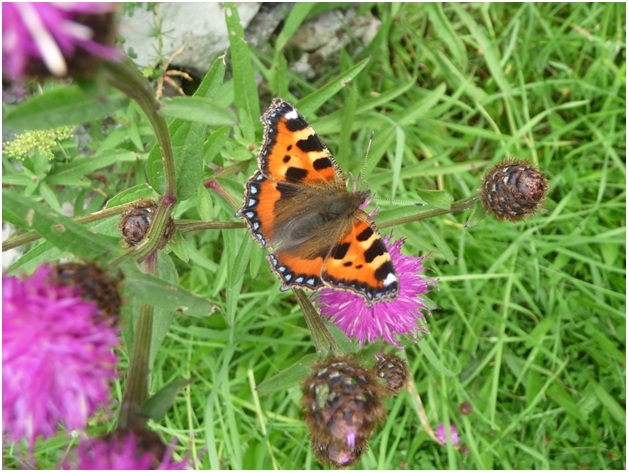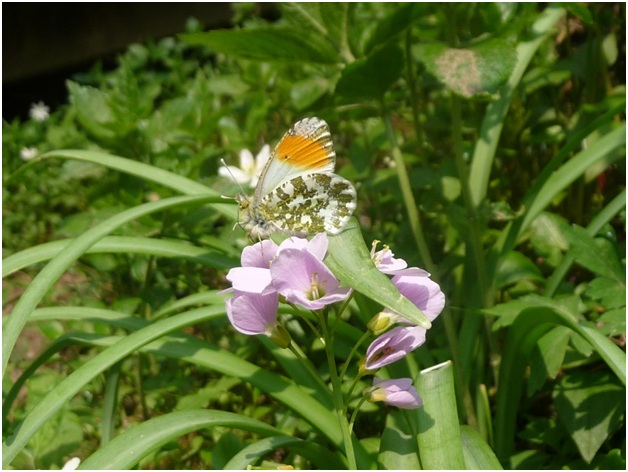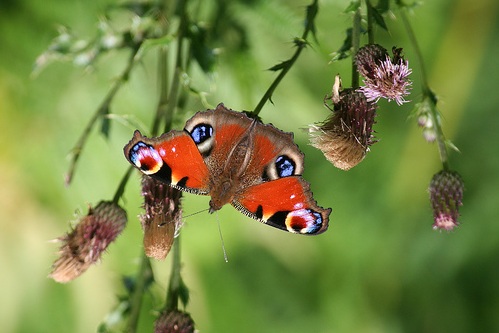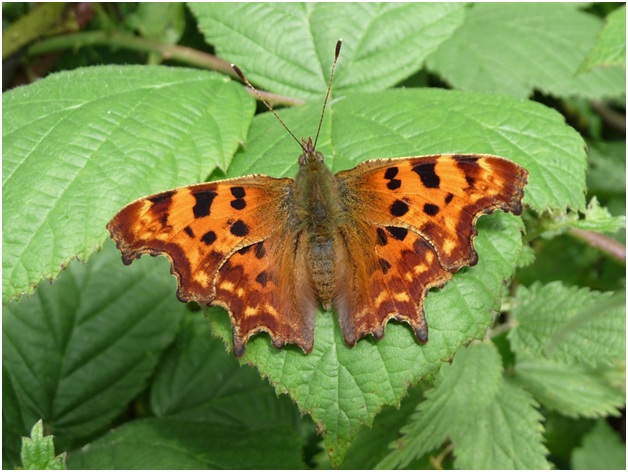Best places to see butterflies on the reserve
If you’ve been walking through the reserve lately on a hot sunny day you might have seen some of the butterfly species that live here. 12 different species of butterfly have been found at the Falls of Clyde although only a few are seen regularly. If you’re out and about on the reserve just now then the species you’re most likely to see are Green-veined White, Small White, Large White and Small Tortoiseshell.
A favourite spot for these species is along the blue path from the dipping pond, across the meadow to the surge tank and Bonnington Pavillion. In particular watch out for a Small Tortoiseshell which can often be seen on sunny days half way along the path through the meadow. Males of this species find females by setting up a territory in a sunny spot near to a nettle patch and waiting for one to fly by. Males defend these territories from each other and can sometimes be seen spiralling into the air and plunging back down as they compete for the best spots.

If you were walking along the boardwalk earlier this year you might have seen some of the beautiful Orange Tip butterflies that enjoy this spot. In fact it’s only the males which have the orange tips to their wings, the females having grey tips. Rather than stake out a territory like the Small Tortoiseshell the male Orange Tip instead opts to patrol the countryside searching out as many females as they can. The male’s bright colouring is quite easy to spot, to birds as well as to humans. This is quite deliberate – these butterflies have a very bitter taste and once birds have tasted one they will associate the bright white and orange colourings with something nasty and not try again!

The Peacock butterfly uses a different technique to protect itself from predators. This species is in fact quite tasty to birds so it has to rely on other methods to deter them. The underside of a Peacock is patterned brown and if it sits with its wings together it is well camouflaged. However if it is discovered it has another trick up its sleeve – If you look at a Peacock upside down you can see that the large spots on the hindwings look like the eyes of an owl, with the body resembling a beak. If a bird or a small mammal comes across a resting Peacock it will flash its wings open to display this pattern, at the same time rubbing its wings together to produce a startling hissing sound.

Peacock butterflies are one of the longest lived of British butterflies. The Common Blue might live for only a few days while the Peacock can last for up to 11 months! Adult Peacocks will be emerging from their cocoons right now and feeding in preparation for hibernation over the winter. Although they generally reappear from March onwards, they can be seen at any time during the winter if they are awakened by a rise in temperature.
Perhaps the most spectacular species to be found on the reserve is the Comma. This beautiful species has an interesting history in Scotland, once common it became extinct in the 1870s. However since then the population has been recovering and Butterfly conservation are running a survey this year to get more information on its current range in Scotland:
Butterfly Conservation – Scottish Comma Survey
Adult butterflies from eggs laid this year should be emerging from their chrysalises about now so keep a look out near the wooden platform at the dipping pond where we spotted this butterfly earlier in the year.

Lizy – Falls of Clyde Seasonal Ranger
Help protect Scotland’s wildlife
Our work to save Scotland’s wildlife is made possible thanks to the generosity of our members and supporters.
Join today from just £3 a month to help protect the species you love.
Preface
If you’ve been walking through the reserve lately on a hot sunny day you might have seen some of the butterfly species that live here. 12 different species of butterfly …
